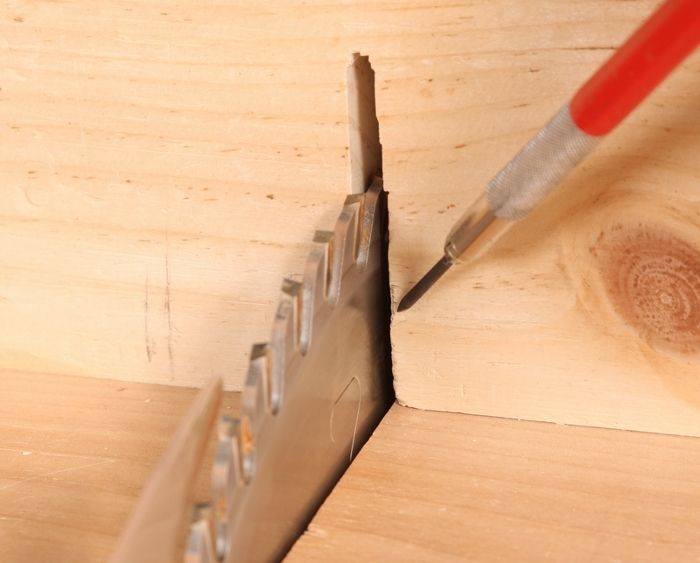
This crosscut sled's blade opening is worn and gappy. This results in tearout and makes the kerf unreliable for aligning a cut with the blade.
I had a photo shoot with Steve latta not too long ago and he showed me a simple trick for getting accurate crosscuts on the tablesaw, even when you don’t have time for a precise set up.
When you read Steve’s articles, you’ll see that he’s an exccedingly thoughtful craftsman. Even when he’s eyeballing it, he figures a way to be dead on.
We described this technique, which Steve calls a “sliding cut”, in his Fundamentals article on crosscut sleds in FWW #219. It’s a simple way to align a cut accurately even when the sled’s kerf slot is worn and no longer hugs the blade tightly.
After squaring one end of the piece, mark the desired length on the stock’s lower front edge. Start to the waste side of the line, making a shallow cut with the blade’s tooth tips so you can just see the stock being removed. With the teeth still in the cut, slide the stock until the cut lines up with your mark, and then complete the crosscut.
For more of Steve’s tips on crosscut sleds, check out Fundamentals in issue #219.


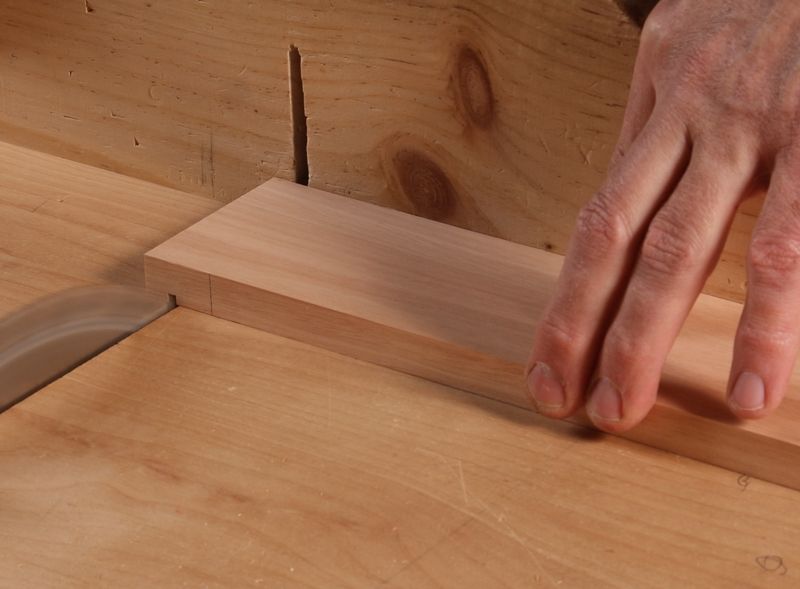
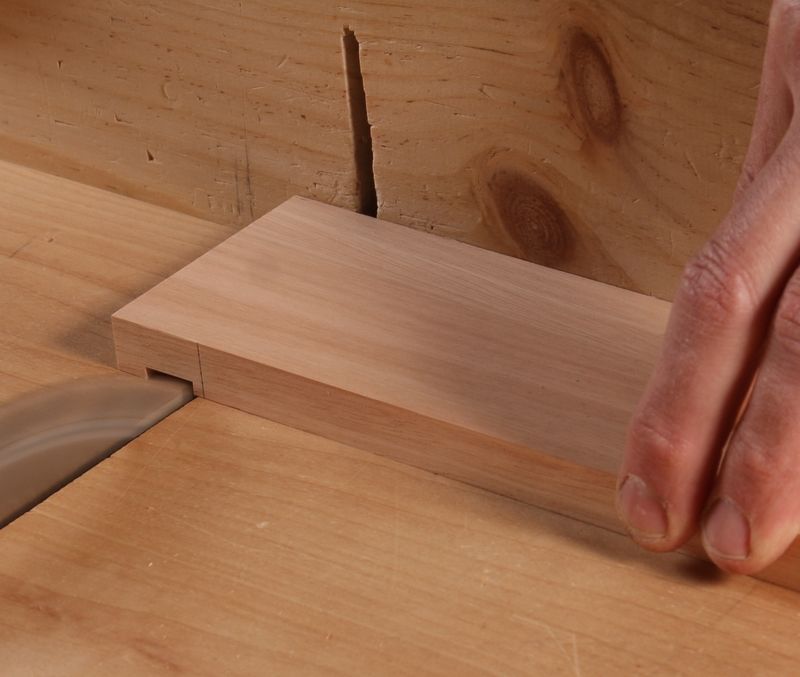








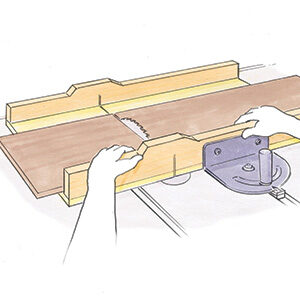
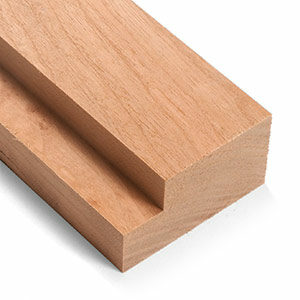
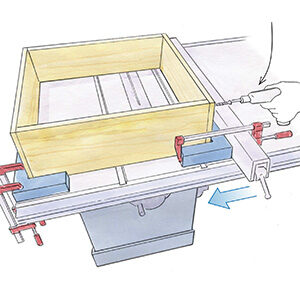












Comments
Message to Steve Latta: Don't give up your day job!
Picture this scenario: I, as your employer, expect a certain amount of production from you, the employee. So when I see you, a seasoned woodworker(making good-bucks, while me struggling, putting in 60-80 hours a week fretting how to get work, make payroll, fight the union,local,state,US reg's to stay afloat)diddly-dicking around, making several cuts when ONE CUT would suffice to move the project to completion,it makes me wanna'puke!
First: Have more than one sled in reserve (built during a 'lull' in production).
Second: And more to the 'quick-and-dirty' solution to the 'issue': Clamp a piece of thin scrap stock, 1/4 ply whatever, to the fence and make the record cut! Plain and simple. No need to make multiple(read: time-is-money)cuts to achieve the same result. Am I Missing something here?
Sang the Scarecrow: I could while away the hours,
conferrin' with the flowers
Consultin' with the rain.
And my head I'd be scratchin'
while my thoughts were busy hatchin'
If I only had a brain.
Message to DasHornetson; Perhaps you SHOULD give up your day job as it seems as if it is causing you much deep resentments and puzzling anger towards a "seasoned woodworker". Attitudes like you have expressed here, in my opinion, make me wanna puke.
Besides, DH, how many subscribers do you really think are working in a production shop? Most of the content I've seen is clearly aimed at amateurs.
I should probably clarify that the sliding cut technique doesn't involve multiple cuts.It is one very light cut that tracks laterally until the cut line is reached, and then through the stock. I'm also sure Steve would agree that it's not a long-term substitute for fresh fence and deckplates on the sled.
It's also worth pointing out that Steve's occupation is training college kids for careers in production wood shops. I'm sure his students would tell you how firmly he emphasizes the ideas of safety, efficiency and proper set-up.
Great Q&D (quick and dirty) solution. Some time ago I fitted my crosscut table with an INCRA fence and no just add a wood face held by recessed screws. But every now and again, my sacraficial wood fence neede replacing but I don't want to take the time.
Message to DasHornetson: Wow, I didn't realize this little tip was directed at some kind of production shop worker instead of a helpful little tip to some one like me, an amateur. Let go DH, you're definitely full of yourself. And your "have one more sled in reserve" comment reminds me that it is the manager/supervisor that should be supplying the tools for the employee to complete his assigned tasks; with you're reasoning for knocking the helpful tip of the "sliding cut" as being a time waster, where is the worker gonna find a "lull" in production to create said "reserve sled"?
DasHorneston, It's clear that you already know it all and are simply wasting your time reaing this forum. Perhaps there is another that might be directed towards some of your "professional" caliber.
Message to DasHornetson: Perhaps you should stick to the poetry and forget about the criticism. Maybe the whole problem lies in the last line of your comment?
I found the tip from Stephen Scott to be helpful and look forward to more of the same.
Log in or create an account to post a comment.
Sign up Log in